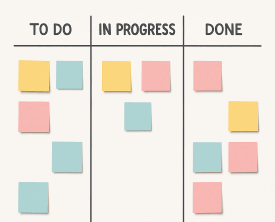8 Benefits of Multiple User and Team Scheduling
By Mark Ballance, Resource Scheduling Specialist at Schedule it Ltd since 2010.
 Multiple user scheduling software has emerged as a powerful tool to streamline collaboration, optimize resource allocation, and enhance productivity. In this blog post, we will delve into 8 of benefits that multiple user scheduling software offers and explore how users can us use it to work together seamlessly and efficiently.
Multiple user scheduling software has emerged as a powerful tool to streamline collaboration, optimize resource allocation, and enhance productivity. In this blog post, we will delve into 8 of benefits that multiple user scheduling software offers and explore how users can us use it to work together seamlessly and efficiently.1. Empowering Team Coordination and Communication
At the heart of multiple user scheduling software lies the ability for teams to coordinate and communicate seamlessly. These tools provide a centralized platform where team members can easily view each other's schedules, availability, and commitments. This transparency paves the way for improved coordination, minimizes scheduling conflicts, and ensures everyone is on the same page.Real-Time Visibility: Multiple user scheduling software offers real-time visibility into team members' schedules. With a quick glance, colleagues can identify optimal times for meetings or collaborations, reducing the back-and-forth communication often associated with scheduling.
Automated Notifications: When integrated with communication tools like email or instant messaging platforms, scheduling software can automatically notify team members about upcoming appointments or changes. This ensures that everyone is informed promptly, minimizing the risk of missed meetings.
2. Efficient Resource Allocation
Effective resource allocation is a critical aspect of successful project management. Multiple user scheduling software assists in optimizing resource allocation by providing insights into resource availability and usage. This facilitates the allocation of meeting rooms, equipment, and personnel.Resource Visualization: Scheduling software allows teams to visualize resource availability through calendars and timelines. This helps in preventing overbookings and ensuring that essential resources are allocated correctly.
Collaborative Resource Management: Integrating multiple user scheduling software with project management or resource tracking tools enhances collaborative resource management. Teams can allocate resources based on project priorities, ensuring that critical tasks receive the necessary support.
3. Personalized Productivity Enhancement
Every individual has unique working patterns and preferences that influence their productivity. Multiple user scheduling software empowers users to tailor their calendars, establish recurring tasks, and set priorities to align with their personal work styles.Personalized Time Blocking: Users can block off specific time slots for focused work, meetings, or breaks. This time blocking technique enhances productivity by creating dedicated periods for concentrated effort.
Task Prioritization: Integrating task management tools with scheduling software allows users to assign priorities and deadlines to tasks directly from their calendar. This integrated approach streamlines the process of managing tasks and ensures a clear focus on high-priority activities.
4. Strengthening Client and Customer Relationships
For businesses that rely on client interactions, multiple user scheduling software offers a streamlined approach to managing appointments, consultations, and follow-up meetings.Client-Centric Scheduling: Integrating scheduling software with customer relationship management (CRM) systems enables seamless appointment scheduling based on client preferences and availability. This personalized approach enhances the client experience.
Automated Reminders and Follow-ups: Scheduling software, when integrated with CRM tools, can automatically send reminders and follow-up notifications to clients, ensuring that appointments are not forgotten and communication remains consistent.
5. Fostering Cross-Functional Collaboration
In today's interconnected workplaces, collaboration is essential for innovation and success. Multiple user scheduling software facilitates collaboration by enabling teams from different departments to coordinate their schedules.Interdepartmental Synchronization: Teams working on cross-functional projects can synchronize their schedules, ensuring that key team members are available for collaborative discussions and decision-making.
Integrated Task Management: By integrating scheduling software with task management tools, cross-functional teams can seamlessly align their schedules with project timelines and allocate tasks according to expertise and skills.
6. Seamlessly Enabling Remote Work
The rise of remote work has shown the need for flexible and accessible scheduling tools. Multiple user scheduling software, particularly when cloud-based, allows team members to access their schedules from anywhere.Global Accessibility: Integrating scheduling software ensures that team members across different regions can coordinate and schedule meetings without confusion.
Remote Collaboration Integration: Combining scheduling software with video conferencing and file-sharing platforms facilitates seamless remote collaboration. Team members can schedule virtual meetings, share documents, and collaborate effectively, regardless of their physical location.
7. Compliance and Audit Trail
Industries with strict compliance and regulatory requirements benefit from multiple user scheduling software's ability to maintain detailed audit trails of scheduling activities.Evidentiary Documentation: Integration with reporting and analytics tools allows scheduling software to generate comprehensive reports, serving as evidence of adherence to compliance regulations during audits.
Automated Record-Keeping: Scheduling software can automatically record and archive scheduling activities, ensuring that compliance with scheduling protocols is well-documented and easily accessible.
8. Streamlined Administrative Processes
Manual administrative tasks, such as appointment coordination and reminder notifications, can be time-consuming and prone to errors. Multiple user scheduling software can automate or assist reducing administrative overhead.Automated Notifications: Integration with email and messaging platforms enables the software to send automated notifications, confirmations, and updates to participants. This eliminates the need for manual communication and ensures all parties are informed.
Effortless Record Maintenance: Scheduling software can automatically update records, ensuring that changes in appointments or schedules are accurately documented without manual intervention.
How Multiple User Scheduling Software Work Together
The true potential of multiple user scheduling software emerges when these tools are integrated to create a comprehensive ecosystem that addresses all the needs and scenarios. The following examples showcase the collaboration facilitated by integrating various scheduling software:1. Collaborative Project Management: Combining project management software with multiple user scheduling tools enables teams to create project timelines, allocate tasks, and schedule meetings collaboratively. Changes made to project timelines can automatically update team members' schedules, promoting real-time visibility and alignment.
2. Resource Management and Allocation: Integration of resource management and task tracking tools with multiple user scheduling software allows organizations to allocate resources efficiently based on project priorities and timelines. This integration prevents resource conflicts and ensures tasks are scheduled in alignment with available resources.
3. Remote Collaboration Enhancement: Integrating scheduling software with video conferencing and document sharing platforms creates a seamless remote collaboration environment. Team members can schedule virtual meetings, share documents, and collaborate effectively, regardless of their physical location.
Multiple user scheduling software has emerged as a cornerstone of efficient teamwork and collaboration. The benefits of these tools extend beyond mere scheduling and includes enhanced communication, optimized resource allocation, personalized productivity, and streamlined administrative processes.
When thoughtfully integrated, multiple user scheduling software creates a powerful synergy that redefines how teams work together, driving efficiency and elevating results. As technology continues to evolve, these tools will undoubtedly play a pivotal role in shaping the future of collaborative work environments, making them an indispensable asset for modern-day professionals and businesses alike.
Try Schedule it Free
No credit card required. Capterra/G2











